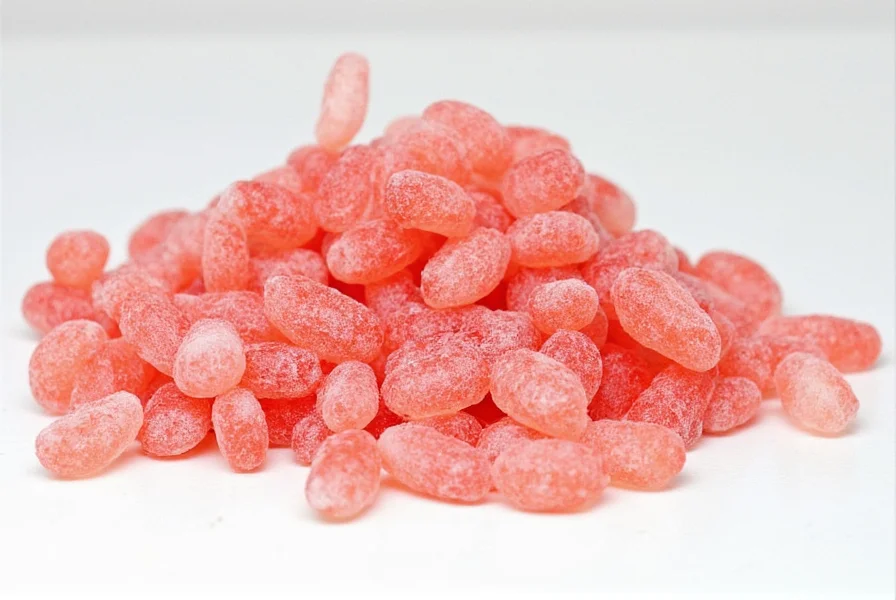Cinnamon flavored gum stands out in the chewing gum market for its unique sensory experience. While mint varieties dominate global gum sales, cinnamon maintains a dedicated following who appreciate its bold character and traditional appeal. The distinctive warmth comes from cinnamaldehyde, the primary compound in cinnamon bark that stimulates thermal receptors in the mouth, creating that characteristic 'hot' sensation without actual temperature change.
The Historical Roots of Cinnamon Flavor in Gum
Cinnamon's journey into chewing gum began long before modern confectionery. Ancient civilizations like the Egyptians and Greeks used cinnamon for medicinal purposes and as a breath freshener. When chewing gum emerged commercially in the late 19th century, cinnamon was a natural flavor choice due to its established use in oral care and its potent, long-lasting properties.
One of the earliest commercial cinnamon gums was introduced in the 1920s by Adams Company, which later became part of Cadbury. This gum, known as "Beemans Pepsin Gum," initially contained pepsin enzyme but eventually evolved into a cinnamon-flavored product that gained significant popularity. The flavor's association with traditional remedies and its distinctive kick helped it maintain relevance even as mint varieties began dominating the market.

How Cinnamon Flavoring Works in Modern Gum
Modern cinnamon flavored gum relies on precise flavor chemistry to deliver that signature experience. The primary component is cinnamaldehyde (typically 60-90% of cinnamon oil), which creates the initial heat sensation. Manufacturers carefully balance this with other compounds like eugenol (from clove) and linalool to create complex flavor profiles that evolve during chewing.
The delivery system matters significantly. Unlike mint flavors that use menthol crystals, cinnamon flavor is usually incorporated as an oil-based emulsion that slowly releases as the gum base softens. This controlled release explains why cinnamon gum often has a more dramatic flavor curve—intense at first, then gradually mellowing—compared to the more consistent cooling of mint gums.
| Flavor Component | Percentage in Cinnamon Oil | Sensory Effect |
|---|---|---|
| Cinnamaldehyde | 60-90% | Initial heat sensation, warm spiciness |
| Eugenol | 5-10% | Supporting spicy note, slight numbing effect |
| Linalool | 2-5% | Floral undertone, helps mellow intensity |
| Cinnamyl acetate | 1-3% | Fruity note, extends flavor duration |
Cinnamon Gum's Sensory Experience Compared to Other Flavors
Understanding why cinnamon flavored gum creates such a distinctive experience requires examining how our sensory receptors respond to different flavor compounds. While mint gums activate TRPM8 receptors (creating cooling sensations), cinnamon primarily stimulates TRPV1 receptors—the same receptors activated by capsaicin in chili peppers.
This physiological response explains several characteristics of cinnamon gum:
- Initial intensity: The immediate 'heat' that distinguishes it from milder mint varieties
- Flavor evolution: As cinnamaldehyde depletes, the flavor transitions from hot to sweet
- Shorter duration: Cinnamon flavor typically lasts 15-25 minutes versus 25-40 for mint
- Saliva production: The spicy stimulus increases saliva flow more than mint flavors
Global Preferences for Cinnamon Flavored Gum
Cinnamon gum's popularity varies significantly across different markets. In North America, it maintains a steady 10-15% market share among flavored gums, often positioned as a 'bold' alternative to mint. In parts of Europe, particularly Scandinavia, cinnamon gum enjoys higher popularity, sometimes exceeding 20% market share.
Interestingly, in Asian markets, cinnamon gum often appears in more specialized product lines. Japanese confectioners, for example, have created sophisticated cinnamon gum varieties that blend traditional Japanese flavors with cinnamon's warmth, appealing to consumers seeking unique sensory experiences. This regional variation demonstrates how the same base flavor can be adapted to different cultural preferences for cinnamon flavored chewing gum.

Practical Considerations for Cinnamon Gum Consumers
For those exploring cinnamon flavored gum, several practical factors affect the experience:
Flavor intensity options: Many manufacturers offer varying intensity levels, from mild 'cinnamon spice' to 'fire' varieties that incorporate additional warming compounds. Understanding these differences helps consumers select products matching their tolerance for the characteristic heat sensation of cinnamon gum.
Dental considerations: While all sugar-free gums stimulate saliva production (beneficial for oral health), cinnamon gum's stronger flavor profile may provide more pronounced breath-freshening effects initially. However, the more intense flavor compounds don't necessarily translate to longer-lasting freshness compared to mint varieties.
Allergy awareness: Though rare, some individuals may experience sensitivity to cinnamaldehyde. Those with known cinnamon allergies should avoid cinnamon flavored gum, as the concentrated form in gum could potentially trigger reactions in sensitive individuals.
Why Cinnamon Flavored Gum Endures in a Mint-Dominated Market
Despite mint varieties controlling approximately 70% of the global gum market, cinnamon maintains a loyal following. This persistence stems from several factors:
- Nostalgia factor: For many consumers, cinnamon gum represents childhood memories and traditional flavors
- Sensory differentiation: Its distinctive heat provides a clear alternative to cooling mint experiences
- Cultural associations: In some regions, cinnamon carries positive connotations of warmth and comfort
- Functional benefits: The initial intensity creates a more noticeable 'freshness' sensation
Modern innovations continue to expand cinnamon gum's appeal. Recent developments include combinations with complementary flavors like apple, cherry, or even coffee, creating more complex taste experiences while maintaining that signature cinnamon warmth that has made cinnamon flavored gum a enduring choice for chewers worldwide.
Frequently Asked Questions About Cinnamon Flavored Gum
Why does cinnamon gum feel hot in my mouth?
Cinnamon gum creates a warming sensation because cinnamaldehyde (the primary compound in cinnamon) activates TRPV1 receptors in your mouth—the same receptors that respond to heat and capsaicin in chili peppers. This neurological response creates the perception of heat without actually raising temperature.
How long does cinnamon gum flavor typically last compared to mint gum?
Cinnamon gum flavor typically lasts 15-25 minutes before significantly diminishing, while mint gum often maintains noticeable flavor for 25-40 minutes. This difference occurs because cinnamaldehyde depletes faster than menthol compounds used in mint gums, and the intense initial sensation creates a perception that the flavor disappears more quickly.
Is cinnamon flavored gum better for bad breath than mint gum?
Both cinnamon and mint gums stimulate saliva production, which helps neutralize odor-causing bacteria. Cinnamon gum may provide a more immediately noticeable freshness due to its intense initial flavor, but mint gum often delivers longer-lasting breath freshness. Neither offers superior antibacterial properties—both primarily mask odors rather than eliminate their causes.
Can cinnamon gum help with toothache pain?
While cinnamon contains eugenol (a mild analgesic also found in clove oil), the concentration in gum is too low to provide meaningful toothache relief. Any temporary numbing effect would be minimal and short-lived. For dental pain, consult a dentist rather than relying on cinnamon flavored gum as a remedy.
Why does cinnamon gum sometimes make my tongue feel numb?
This temporary numbness occurs because high concentrations of cinnamaldehyde can mildly desensitize nerve endings in your mouth. The effect is similar to how strong mint gum creates cooling sensations. This is harmless and typically resolves within minutes after finishing the gum. If numbness persists, it could indicate sensitivity to cinnamon compounds.











 浙公网安备
33010002000092号
浙公网安备
33010002000092号 浙B2-20120091-4
浙B2-20120091-4